On the evidence of my recent visit, 127-acre Crotona Park is spookily empty during the off-season. I had the southern segment almost completely to myself as I paused for a water and snack break. This area of the former Bathgate Woods is mostly feature-free, save a large playground and a couple of ballfields. When leaf-free as well, it just feels barren.
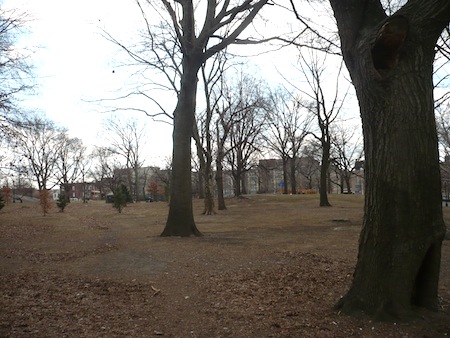
Long humps of rock echo the rock ridges of Echo Park.
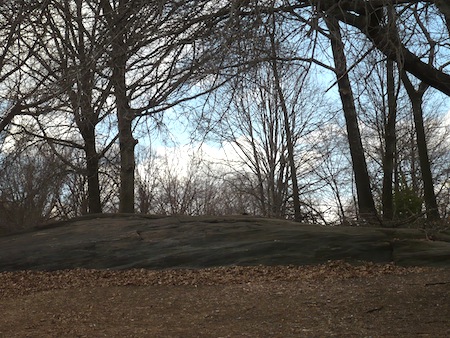
Indian Lake, closer to the center of the park, is Crotona Park's main natural attraction. Unlike some of the more well-known bodies of water in New York City parks, this one isn't man-made.
Planted around it are almost 30 different species of tree, says the Parks Department website.
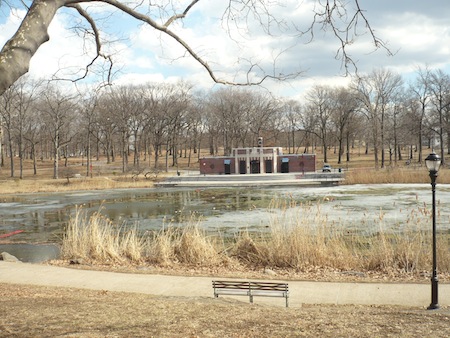

By the lake is a modest amphitheater, topped by a boulder with graffiti that, well, could be worse. Is this boulder the "Indian Rock" described by Daniel Wolfe in this Bronx Board memoir? I can't tell for sure. (Wolfe also says the lake was drained in 1938 in a search for a Peter Levine, a New Rochelle boy who'd been kidnapped, to much press coverage. The boy's mutilated body was instead found in Long Island Sound.)
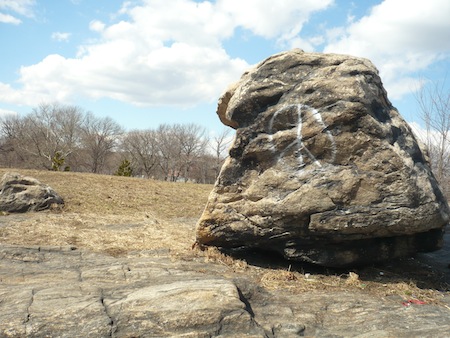
From the other side, in front of the boathouse, the lake's semi-iced-over condition was manifest. Equally obvious: the blasé attitude of the geese towards the cold water. They don't call them Canada geese for nothing.
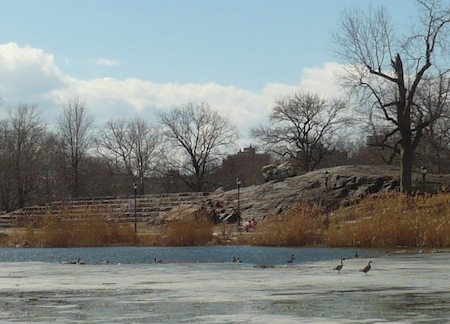
Crotona Park has more tennis courts than I would ever have imagined - 20 of them. A few were even being used in spite of the high winds. (There's also a swimming pool. No pictures of that in March.)

At the north end of the park, a lone pair of lovers sat on a whale of a rock (far right), a rock that reminded me, once again, as firmly as did the apartment buildings rising behind it: Don't forget, this is New York City.

Yes, this is New York City, today said to be the safest big city in America. Crotona Park, though, is reputed to be its most dangerous park. In 2012, 28 felony crimes occurred here. The ancient Greek colony of Croton in southern Italy, for which the park is named, was famed for its physicians, according to Herodotus. But that would be no comfort if you were an assault victim here in the Bronx – even if you were familiar with the misty history of ancient Greece.
The huge rock masses of NYC's terrain – Manhattan Schist, Fordham Gneiss, Indian Rock, whatever we name them – are far more ancient, of course. They'll continue to bear witness to whatever humans build and tear down, and do with (and to) each other, for as long as these lands are peopled. And it's probably a safe bet that couples like the ones in the photo above will continue to find moments of solace and peace in spots like this.
No comments:
Post a Comment